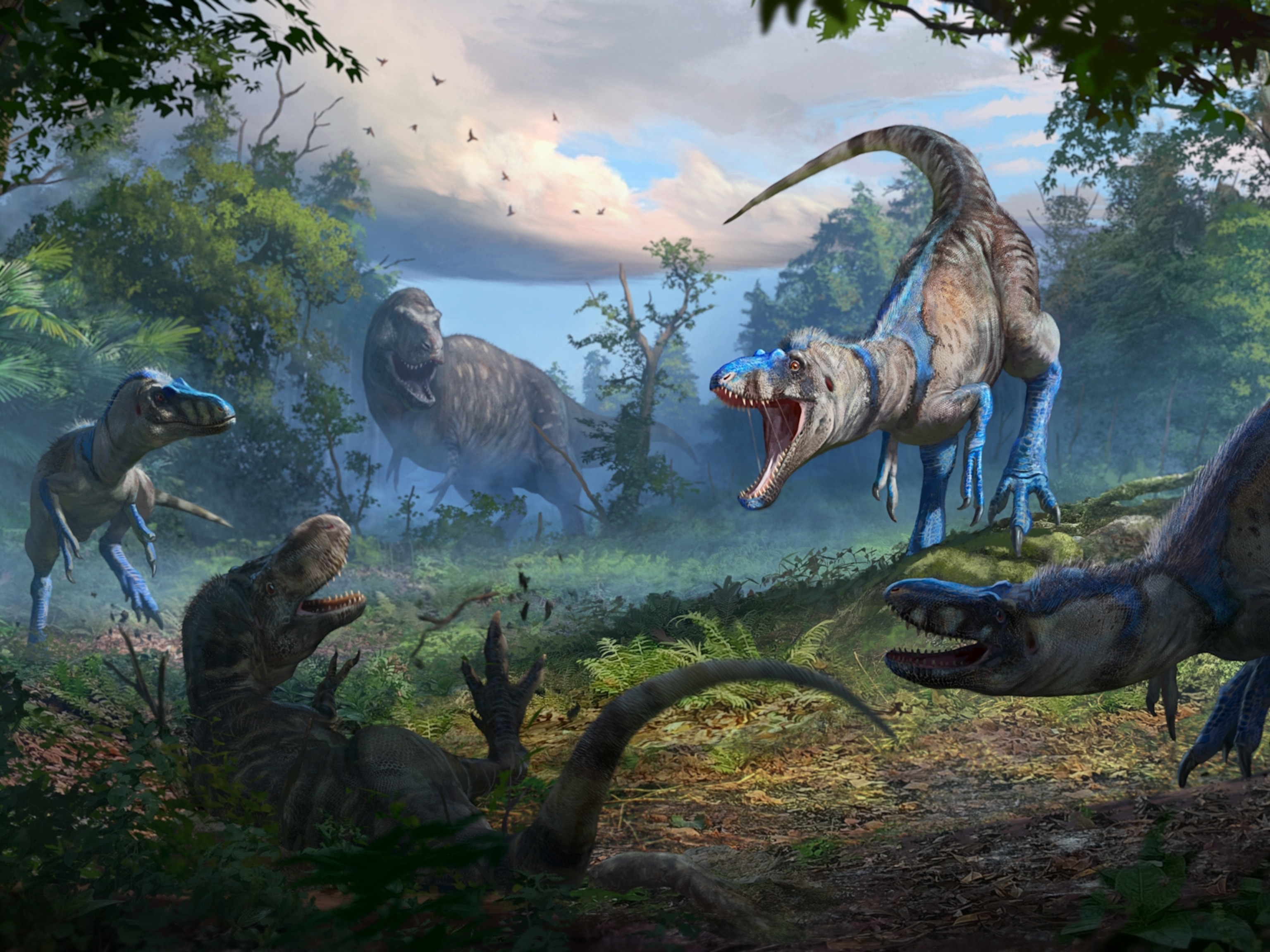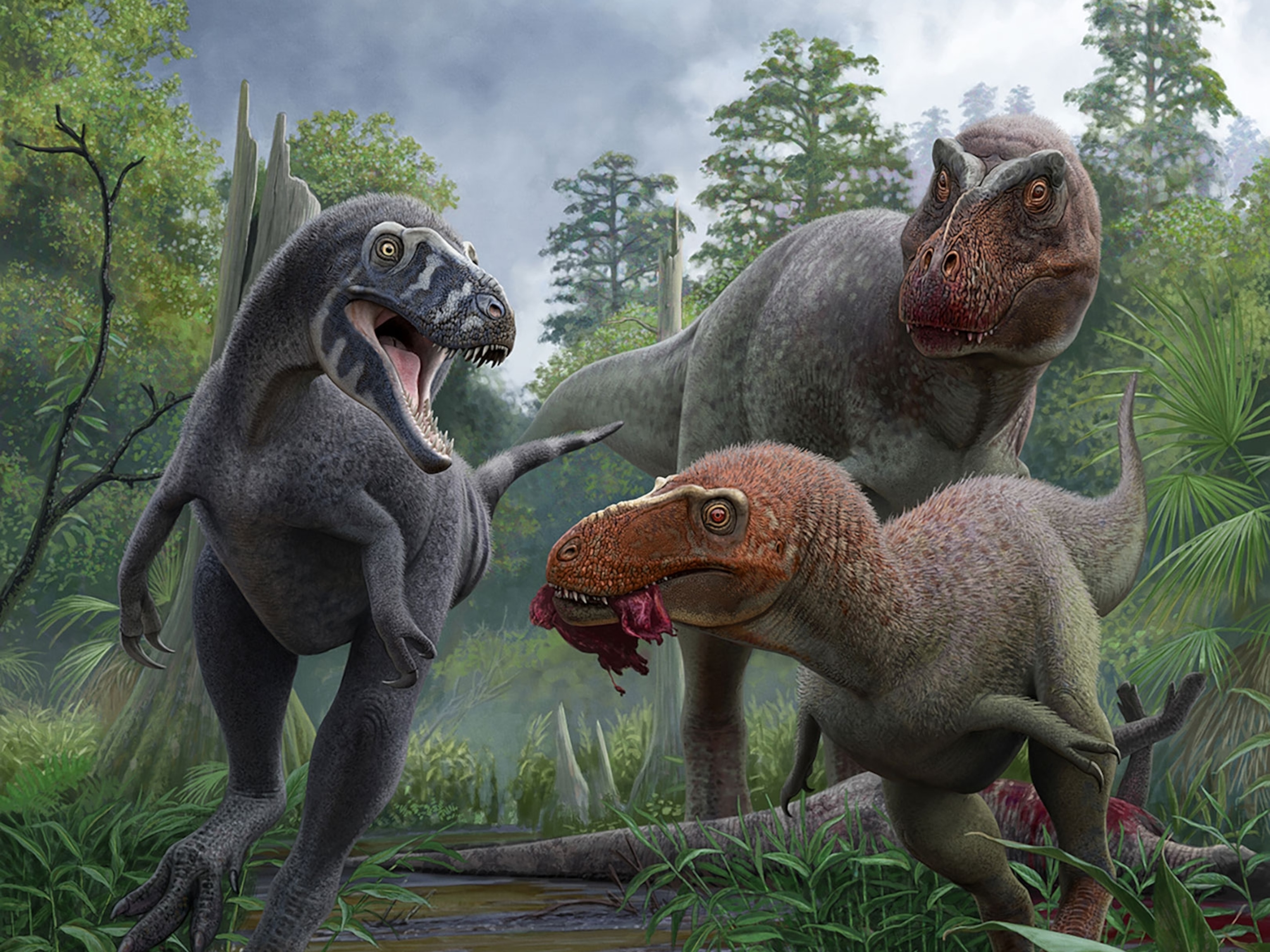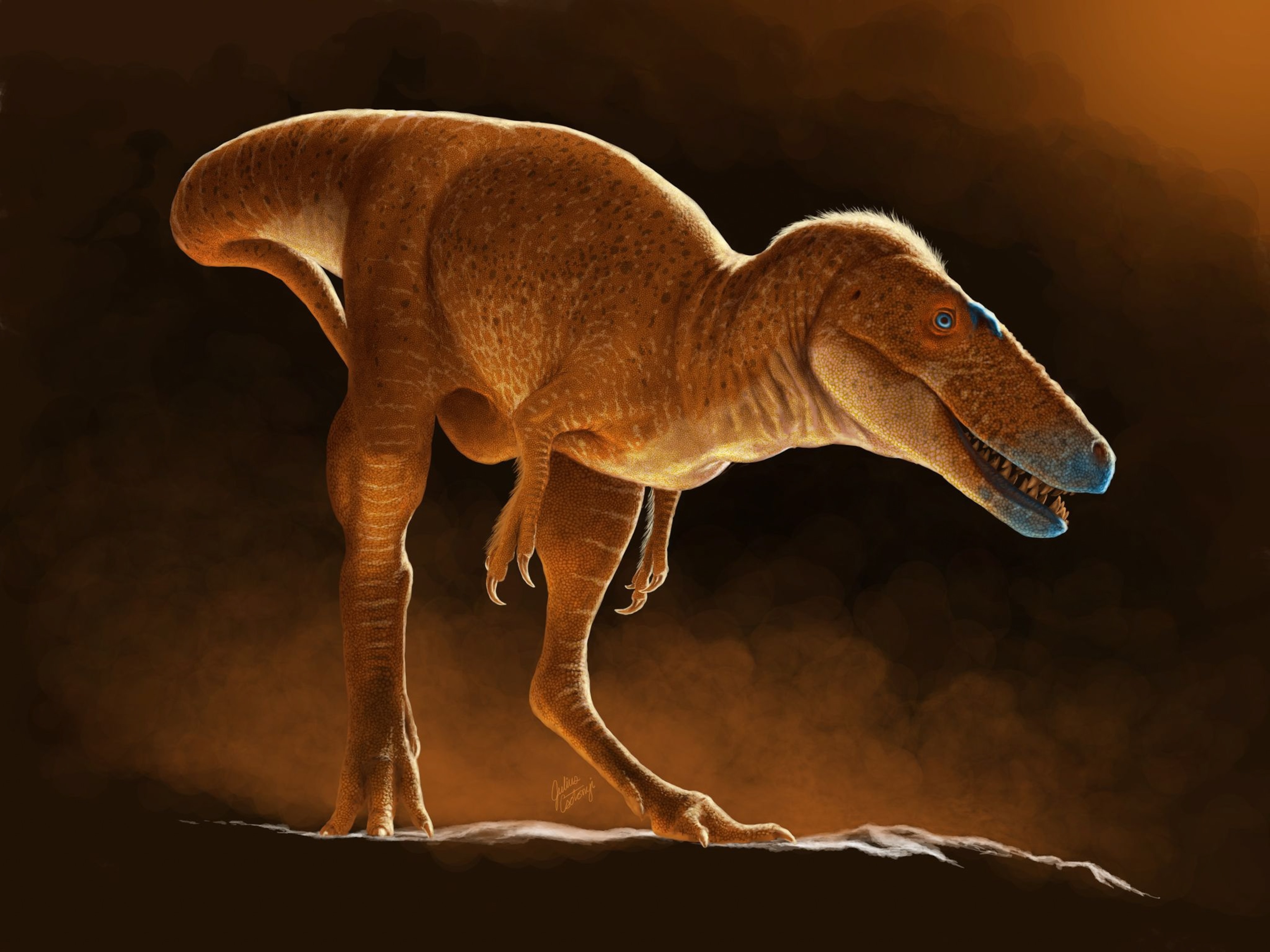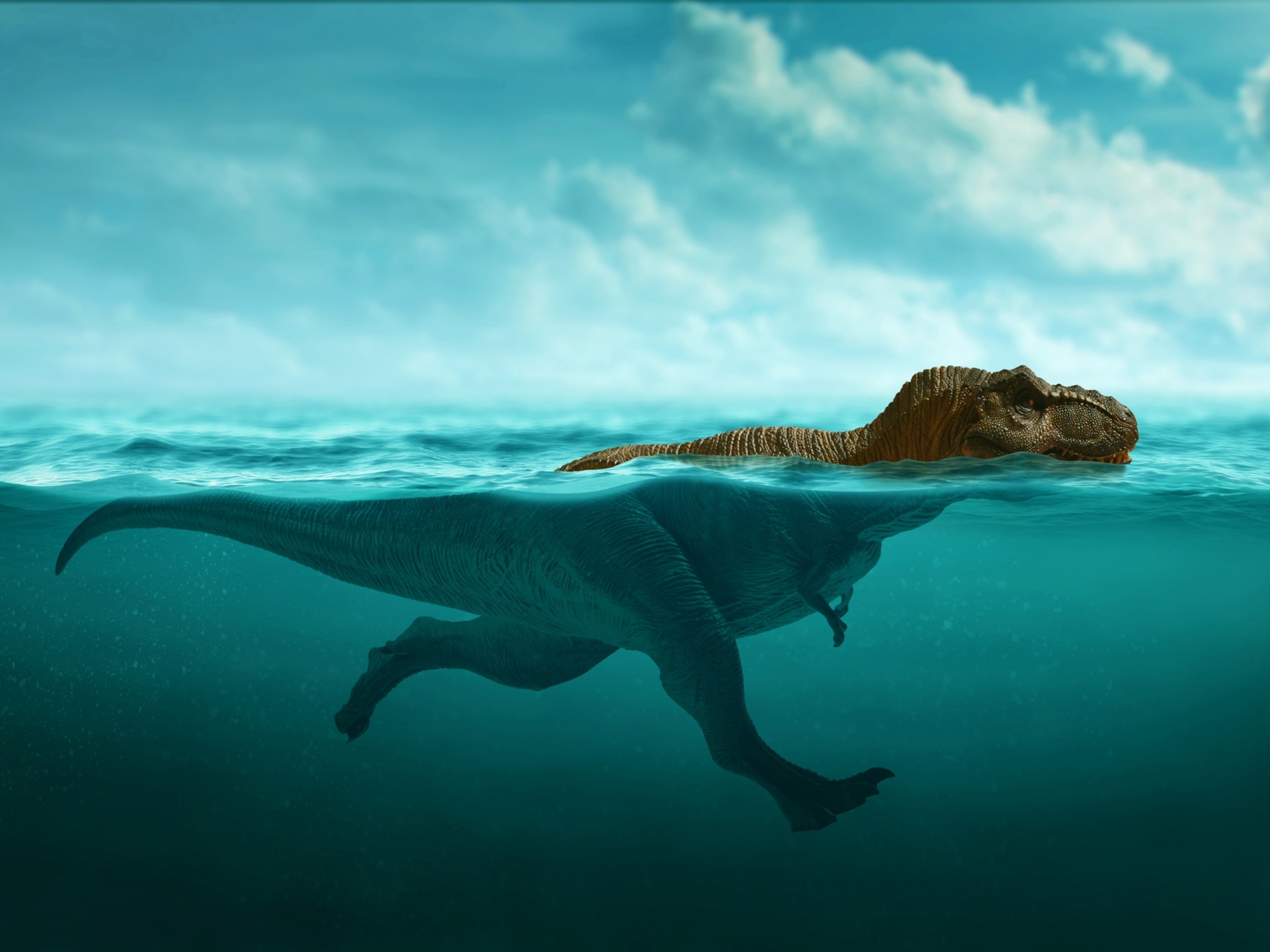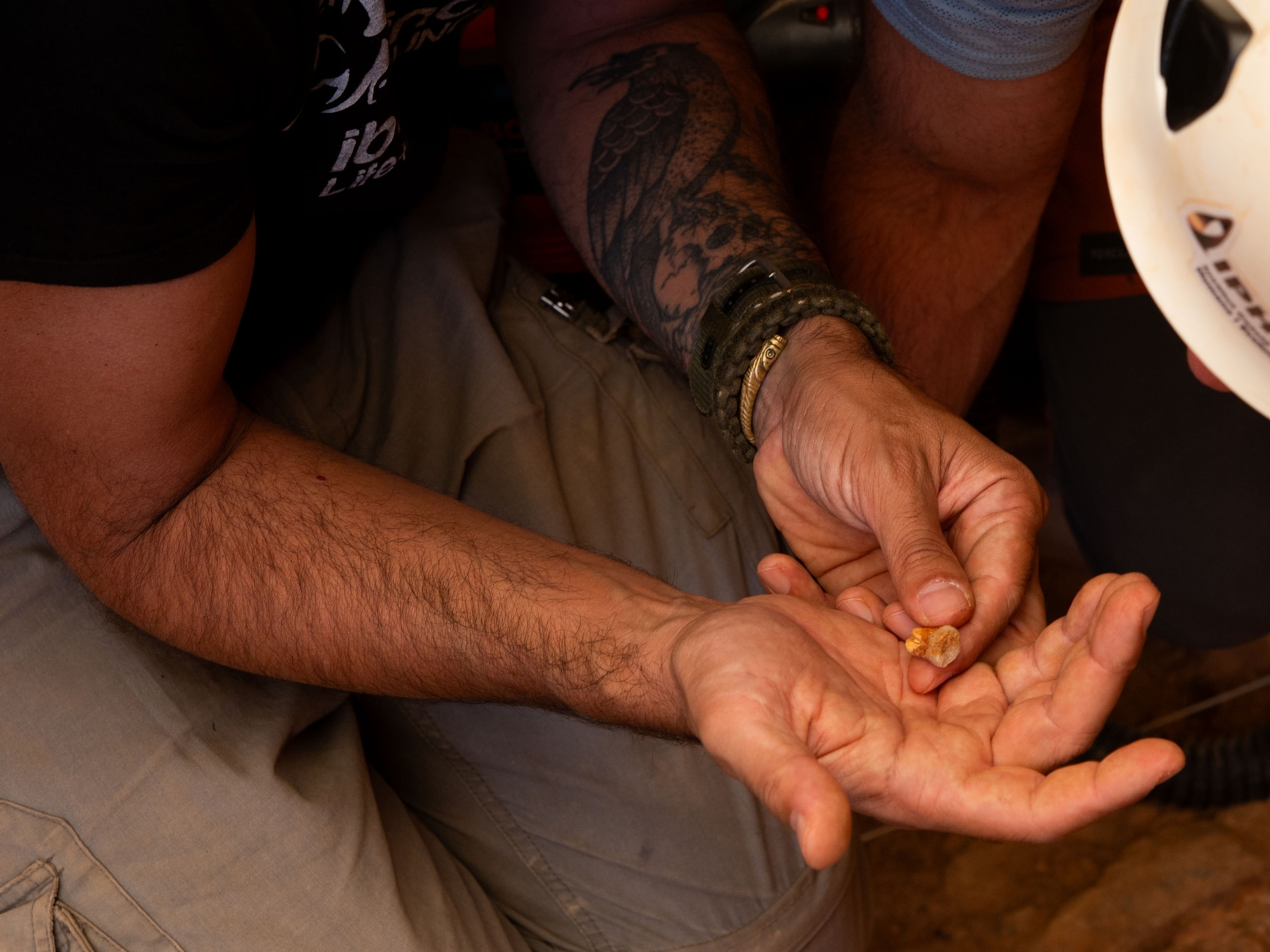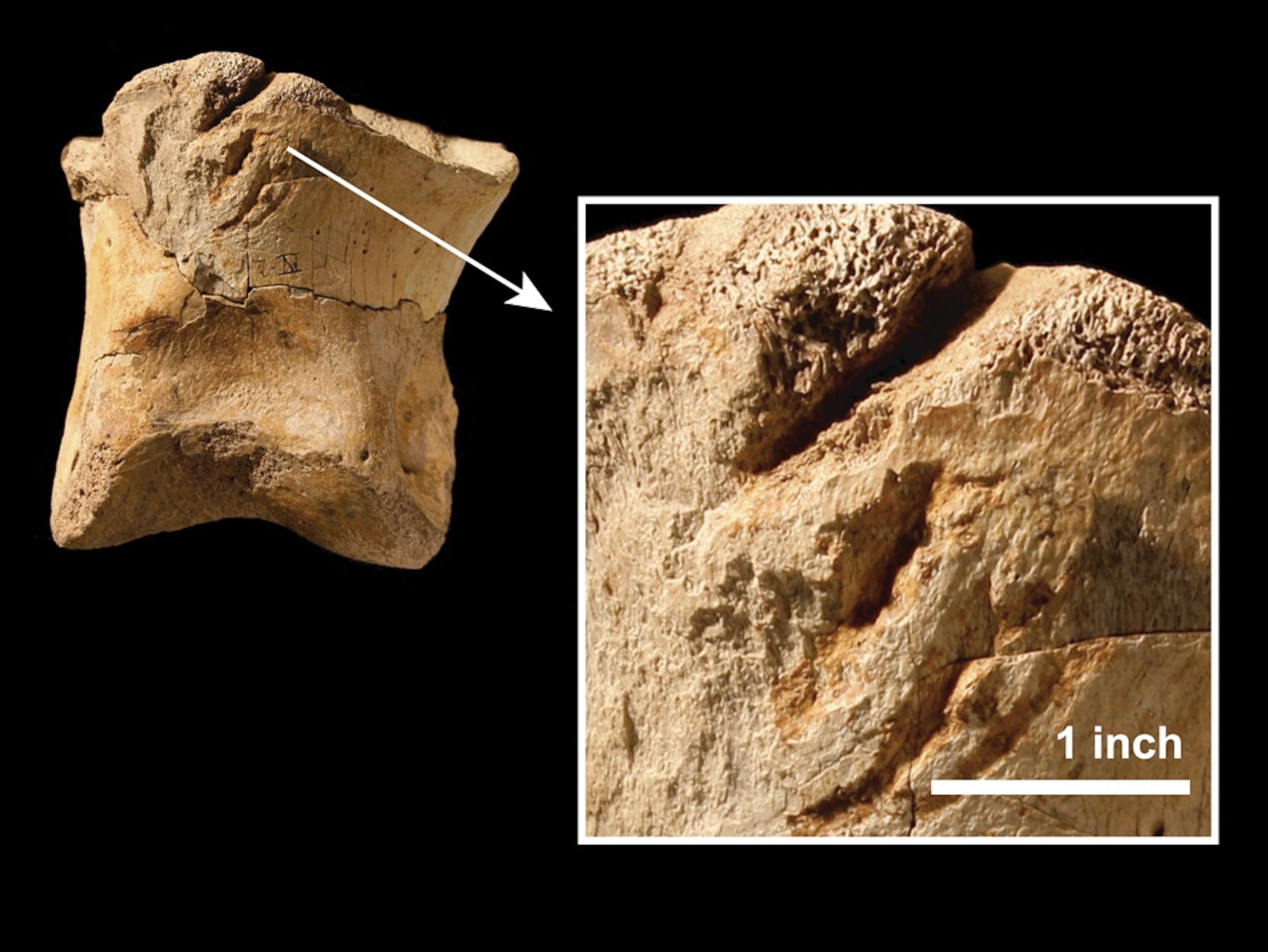
T. Rex Was a Cannibal, Bone Gashes Suggest
Mighty predators may have attacked kin or scavenged corpses.
The formidable Tyrannosaurus rex likely had nothing to fear—except possibly its own kind, a new study suggests.
Paleontologist Nick Longrich of Yale University was examining dinosaur bones found in Montana when he noticed large gouges in bones that had yet to be indentifiied.
The gouges had to have been made by a large carnivore, he said, and when the mystery fossils were deposited 65 million years ago, T. rex was the only North American carnivore large and toothy enough to make such marks.
But the seemingly routine find took a macabre turn when Longrich discovered one of the bitten bones belonged to a T. rex—making it apparent evidence of cannibalism.
This toe bone "has giant theropod bite marks, and the only one there [at that time] was T. rex," he said. "There was really no other conclusion I could come to." (Related: "Tiny T. rex Ancestors Achieved World Domination.")
Further analysis in several fossil collections turned up three more similarly bitten T. rex bones.
Longrich and colleagues speculate the giant predators may have engaged in cannibalism with some regularity—but it's unknown whether the dinosaurs fought to the death or simply scavenged T. rex corpses.
T. Rex Cannibalism Would Mirror Modern Reptiles
Many modern predators, including distant dinosaur relatives such as komodo dragons and crocodiles, are known for cannibalistic behavior—particularly of their young.
Although the practice hasn't been well documented among dinosaurs, scientists do think Majungatholus atopus, a 30-foot-long (9-meter-long) theropod, dined on its kin on the island of Madagascar 65 million years ago.
Hans-Dieter Sues, curator of vertebrate paleontology at the National Museum of Natural History in Washington, D.C., isn't at all surprised by T. rex's taste for its own flesh and blood.
"Meat-eaters of all kinds feed on dead animals, which, after all, are just meat lying around for the taking," said Sues, who was not involved in the study.
"Even pigs, which are omnivores, eat other dead pigs. There is nothing remarkable about this at all."
Eaten T. Rex Was Dinosaur Leftovers?
There's one clue as to whether the eaten T. rex was killed or scavenged, Longrich noted: The cannibalistic bite marks appear to have been made some time after death.
(See "'Mighty' T. rex Mostly Picked Off Youngsters?")
"It's kind of like the turkey on the fifth day after Thanksgiving—you're trying to get the last bits of meat off it," he said. "For the toes to be of interest, the carcass must have been pretty much picked clean."
But that evidence alone doesn't mean T. rex was simply a scavenger, added Longrich, whose study appears online October 15 in the journal PLoS ONE.

